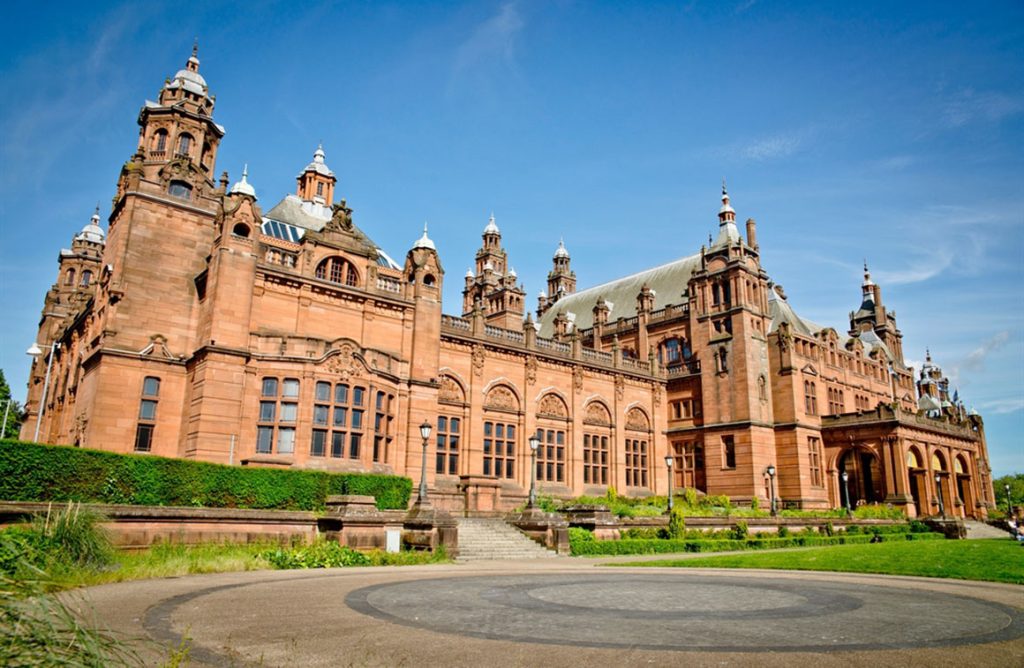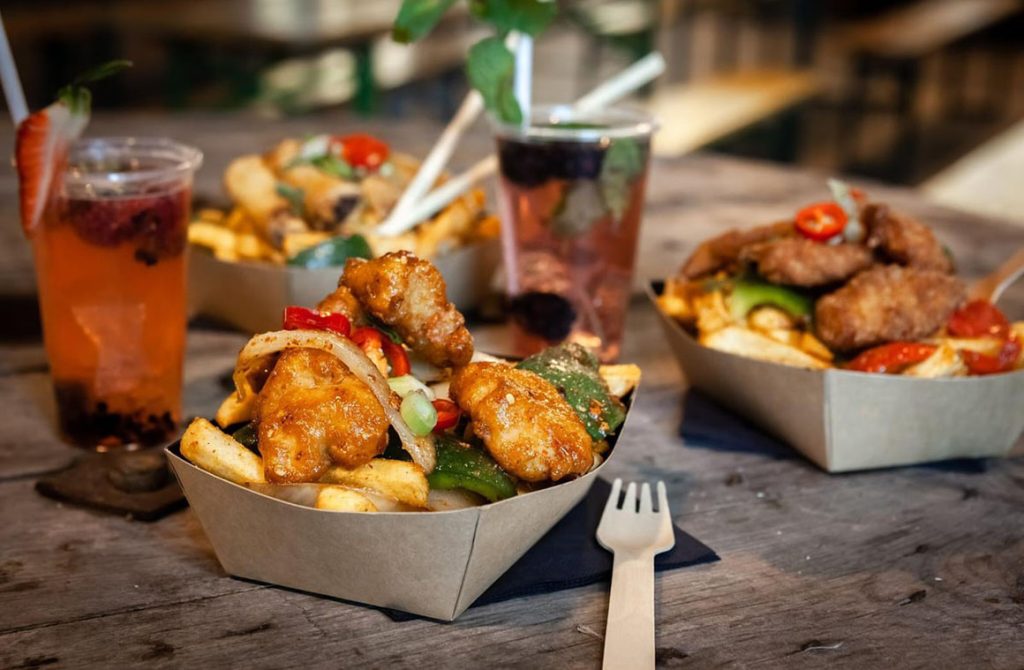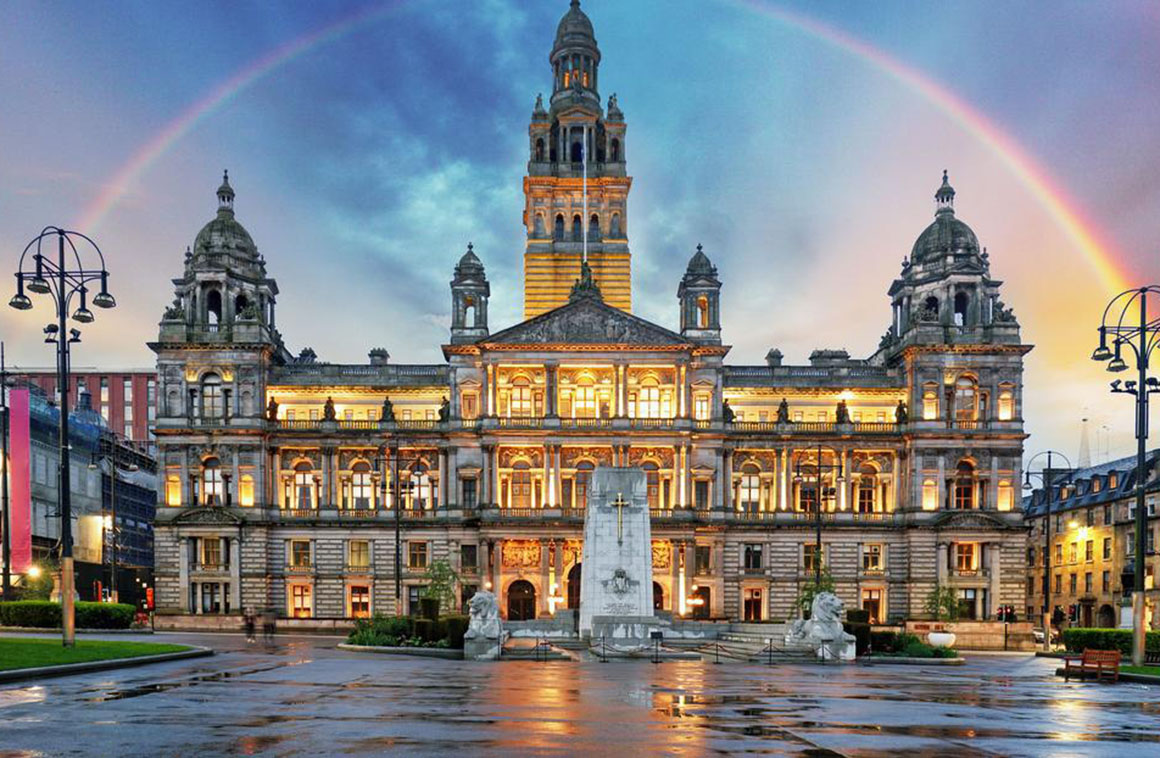Glasgow, Scotland’s largest city, is renowned for its rich history, vibrant culture, and warm-hearted people. I had heard so much about this city—its artistic spirit, stunning architecture, and the famous Glaswegian hospitality. As I embarked on this adventure, I was determined to experience Glasgow to the fullest and share my journey with you, from practical travel tips to personal encounters with the city’s unique etiquette.
Preparing for Glasgow: Travel Gear, Clothing, and Essentials
Before setting off for Glasgow, I carefully curated my travel gear. As someone who enjoys both urban exploration and venturing into nature, I packed accordingly. Here’s a quick rundown of what I found essential:
- Comfortable Footwear: Glasgow is a city best explored on foot, so comfortable walking shoes were a must. I brought a sturdy pair of sneakers for city walks and a pair of waterproof boots for excursions to nearby parks and lochs.
- Layered Clothing: Glasgow’s weather can be unpredictable, with sudden changes in temperature and the occasional rain shower. I packed plenty of layers, including a lightweight jacket, sweaters, and scarves. A good waterproof jacket was also essential, and I was grateful I brought it along.
- Power Adapter and Portable Charger: The UK uses Type G power outlets, so I packed a universal adapter. A portable charger also came in handy, especially during long days of sightseeing.
- Reusable Water Bottle: Staying hydrated is important, especially when exploring all day. Many places in Glasgow offer free tap water, so a reusable bottle was both environmentally friendly and convenient.
- Travel Insurance: Given the unpredictability of travel, I made sure to purchase comprehensive travel insurance before leaving. This provided peace of mind, covering everything from health emergencies to lost luggage.
Money Matters: Currency Exchange and Budgeting
Scotland uses the British Pound (£), so I exchanged some currency before arriving. However, I found it just as easy to withdraw money from ATMs around the city. Most places accept credit and debit cards, but having some cash on hand for smaller purchases, such as street food or tips, was helpful.

Budgeting for Glasgow was relatively straightforward. While the city is more affordable than London, prices can still add up. I allocated my budget across various categories: accommodation, food, attractions, and transportation. Staying at a mid-range hotel in the city center offered the perfect balance between comfort and accessibility. For meals, I mixed dining out at local restaurants with trying street food, which kept my food expenses reasonable.
Staying Connected: Getting a Local SIM Card
One of my first tasks upon arrival was to get a local SIM card. Staying connected is crucial, especially when navigating a new city. There are several mobile providers in Glasgow, including EE, O2, and Vodafone. I opted for a prepaid SIM card from EE, which I purchased at a kiosk in the airport. The process was simple: I provided my passport, chose a plan that suited my data needs, and within minutes, I was connected. The coverage was excellent throughout my stay, even in more remote areas.
Understanding Glaswegian Etiquette
One of the most enriching aspects of travel is immersing oneself in the local culture. In Glasgow, understanding and respecting local etiquette is essential. Glaswegians are known for their friendliness and warmth, but as with any culture, there are certain social norms to be aware of.
- Greetings and Politeness: A simple “hello” or “hi” goes a long way in Glasgow. People here appreciate politeness, so always remember to say “please” and “thank you.” I noticed that when entering shops or restaurants, a friendly greeting often sparked a brief, pleasant conversation with staff.
- Tipping: While tipping is not mandatory in Scotland, it is appreciated, especially in restaurants and cafes. I usually left a 10-15% tip for good service, and this was always met with gratitude.
- Queueing: Scots are known for their respect for queues. Whether waiting for a bus, at a cash register, or at a popular food stall, it’s important to respect the queue. Pushing in or skipping ahead is considered very rude.
- Personal Space and Conversation: Glaswegians are generally open and friendly, but they also value personal space. When engaging in conversation, I kept a respectful distance and avoided overly personal questions, especially when speaking to strangers.
- Respect for Cultural Heritage: Glasgow is proud of its cultural heritage, and I found that showing respect for local traditions and landmarks was important. For instance, when visiting historic sites like the Glasgow Cathedral, I made sure to follow any posted guidelines and refrained from loud conversations.
During my visit, I had several experiences that highlighted the importance of these etiquette norms. For example, while waiting in line at a popular fish and chips shop, a group of tourists inadvertently skipped the queue. The locals were quick to point it out, but in a friendly manner. The tourists apologized and moved to the back of the line, and the situation ended with laughter rather than tension. It was a small but telling moment that underscored the importance of being aware of local customs.
Exploring Glasgow: Must-Visit Attractions
Glasgow is a city rich in history, art, and architecture. I had the pleasure of exploring several iconic landmarks, each offering a unique glimpse into the city’s soul.
The Kelvingrove Art Gallery and Museum
The Kelvingrove Art Gallery and Museum is one of Glasgow’s most beloved cultural institutions. Located in the West End, this magnificent building houses a diverse collection of art and artifacts. From Salvador Dalí’s “Christ of Saint John of the Cross” to ancient Egyptian relics, the museum offers something for everyone. I spent hours wandering through the galleries, marveling at the exhibits.

- How to Get There: The museum is easily accessible by public transport. I took the subway to the Kelvinhall station, which is a short walk away.
- Tips: Entry to the museum is free, but donations are appreciated. The museum can get busy, especially on weekends, so I recommend visiting in the morning to avoid the crowds.
The Glasgow Cathedral and Necropolis
Stepping into Glasgow Cathedral felt like stepping back in time. This stunning example of Gothic architecture has stood for over 800 years and is one of the few medieval churches in Scotland to have survived the Reformation intact. Adjacent to the cathedral is the Necropolis, a Victorian cemetery that offers breathtaking views of the city.
- How to Get There: The cathedral is located in the city center and is easily accessible by bus or on foot from George Square.
- Tips: The cathedral is an active place of worship, so be respectful of any services taking place during your visit. The Necropolis involves a bit of uphill walking, so wear comfortable shoes.
The Riverside Museum and Tall Ship
For anyone interested in transport and maritime history, the Riverside Museum is a must-visit. This award-winning museum features over 3,000 exhibits, including vintage cars, locomotives, and even a recreated street from early 20th-century Glasgow. Just outside the museum, I boarded the Tall Ship Glenlee, a beautifully restored sailing vessel.
- How to Get There: The museum is located on the banks of the River Clyde and is accessible by bus or a scenic walk along the river from the city center.
- Tips: Both the museum and the Tall Ship offer free entry, making this an excellent budget-friendly option. The interactive exhibits are great for kids, making it a perfect family destination.
The Botanic Gardens
After days of urban exploration, I found solace in the Glasgow Botanic Gardens. Located in the West End, this verdant oasis is home to beautiful glasshouses, including the famous Kibble Palace. The gardens are a perfect spot for a leisurely stroll, and I took the opportunity to relax and enjoy the lush surroundings.
- How to Get There: The gardens are a short walk from the Hillhead subway station.
- Tips: Entry to the gardens and glasshouses is free. The gardens are open year-round, but I found them particularly beautiful in the spring when the flowers were in full bloom.
Street Food in Glasgow: A Culinary Adventure
Glasgow’s street food scene is a delightful mix of traditional Scottish fare and international cuisine. One of the highlights of my trip was sampling these delicious treats while wandering the city.

- Haggis, Neeps, and Tatties: A traditional Scottish dish, haggis is a savory pudding made from sheep’s heart, liver, and lungs, mixed with oatmeal and spices. It’s often served with neeps (turnips) and tatties (potatoes). I tried it at a local food stall and found it surprisingly delicious, with a rich, earthy flavor.
- Fish and Chips: A classic, no visit to Glasgow would be complete without indulging in some fish and chips. The crispy, golden batter and perfectly cooked fish, served with a side of chips, made for a satisfying meal. I recommend trying it from a local chippy for an authentic experience.
- Scotch Pie: Another traditional Scottish snack, the Scotch pie is a small, round pie filled with minced meat. It’s a popular street food item, and I enjoyed one while exploring the Merchant City area. The flaky crust and savory filling were perfect for a quick bite on the go.
- Food Safety Tips: While enjoying street food, it’s important to pay attention to food safety. I made sure to choose vendors with clean stalls and a steady stream of customers, indicating fresh food. It’s also a good idea to carry hand sanitizer, especially when eating on the go.
Planning Your Glasgow Itinerary and Budgeting Tips
Planning an itinerary for Glasgow depends on your interests and the time you have available. I spent a week in the city, which allowed me to explore at a leisurely pace while also taking day trips to nearby attractions. Here’s how I structured my itinerary:
- Day 1-2: Exploring the City Center: Start with a walking tour of the city center, visiting landmarks like George Square, Buchanan Street, and the Gallery of Modern Art. Spend the afternoon at the Glasgow Cathedral and Necropolis.
- Day 3-4: West End Wonders: Dedicate a couple of days to the West End, exploring the Kelvingrove Art Gallery and Museum, the Botanic Gardens, and the University of Glasgow. Take a break at one of the many cafes along Byres Road.
- Day 5: Riverside and Maritime History: Visit the Riverside Museum and the Tall Ship, followed by a walk along the Clyde River. In the evening, catch a show at the SSE Hydro.
- Day 6: Day Trip to Loch Lomond: Take a day trip to Loch Lomond, just a short drive from Glasgow. Enjoy the stunning scenery, go for a hike, or take a boat tour on the loch.
- Day 7: Shopping and Farewell: Spend your last day shopping for souvenirs at the Buchanan Galleries or exploring the vibrant markets of the Merchant City.
Adjusting Your Budget
Glasgow offers a range of options to suit different budgets. If you’re traveling on a shoestring, consider staying in hostels or budget hotels. Public transport is affordable, and many attractions, such as museums and parks, offer free entry. For food, street vendors and local cafes provide delicious meals at reasonable prices.
If you have a more flexible budget, splurge on a few fine dining experiences or take guided tours to delve deeper into Glasgow’s history and culture. Booking in advance can often secure discounts on accommodations and attractions.
Travel Insurance: A Wise Investment
I cannot stress enough the importance of travel insurance. During my trip, I encountered a few unexpected situations—a minor health issue and a lost piece of luggage. Thankfully, my travel insurance covered the medical costs and helped replace my lost items. It’s a small investment that can save you from significant stress and financial burden while traveling.
My journey through Glasgow was an unforgettable experience. From the bustling streets of the city center to the tranquil beauty of the West End and the historical depth of the Cathedral and Necropolis, Glasgow captivated me at every turn. The city’s rich cultural tapestry, combined with the warmth of its people, made me feel welcome and at home.
